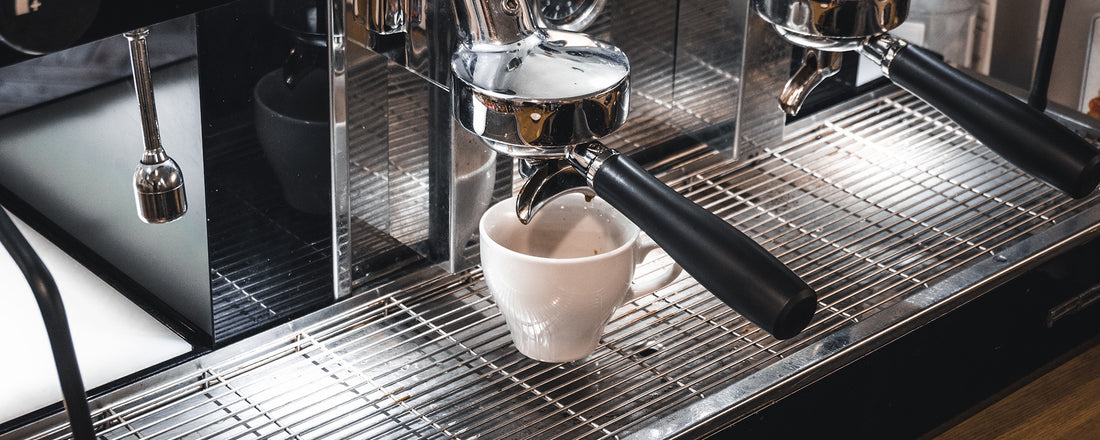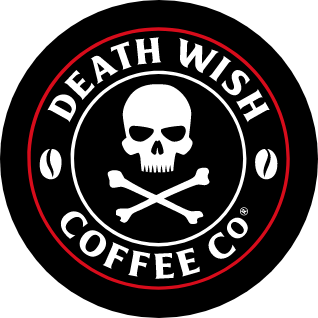
What's the Difference Between Espresso and Drip Coffee?
Coffee TalkEspresso vs. Drip Coffee
Walk into any specialty coffee shop, or any coffee shop in Italy, and you'll find tons of espresso-based drinks—including caffe latte, cappuccino, caffe macchiato and caffe americano. If all that espresso lingo and the pile of options get you nerved up, don't panic. You’re one of many coffee lovers that don’t know how espresso is really that different from regular drip coffee.
Understanding all the hype and learning the main differences between espresso and drip coffee will help you satisfy your coffee cravings and make decisions that are just right for your taste buds every time.

[Photo Credit: Nathan Dumlao via Unsplash]
What Is Espresso and How Is It Made?
Let’s start with two of the main myths surrounding espresso (ess-Press-oh). For one, espresso is not a coffee bean. Any bean—regardless of what the bag says—is always capable of being an espresso bean. Put simply, those beans labeled as “espresso” can also be brewed as regular black coffee. Secondly, espresso is not a roasting style either. Most “espresso beans” are roasted dark because darker roasted coffee is more porous and more of the bean breaks down during the longer, hotter roasting process. That makes extraction easier.
Now that the myths are busted, here’s what you need to know about espresso:
Espresso is a concentrated coffee brewed by forcing or pressurizing a small amount of hot water through the coffee grounds using an espresso machine. Due to its unique brewing process, espresso coffee is generally a thicker consistency than your standard drip coffee. This form of coffee has a higher concentration of suspended and dissolved solids, which results in a coffee topped with crema (sort of like a foam) that forms from the air bubbles mixing with the coffee oils from the finely ground coffee.
What Is Drip Coffee and How Is It Made?
Drip coffee is much more straightforward compared to espresso. Drip coffee is a brewing method that mixes coffee and water together. Unlike an espresso machine, drip coffee is not a high-pressure system. Instead, the hot water is added to the coffee grounds and slowly seeps through the grounds. Drip coffee should be pretty strong—but not as strong as espresso. With a proper brewing technique, however, you should be able to extract most of the flavor from the grounds.

What Are the Differences Between Espresso and Drip Coffee?
1. Grind Size
The main difference between drip coffee and espresso is in the grind size of the coffee beans. For espresso, you typically grind the beans to a finer consistency and firmly pack the grounds before hot water is forced through using an espresso machine. Brewing drip coffee, however, you’ll want to use a medium grind. If your grinds are too fine, you’ll over-extract the brew, leading to a bitter cup. If the grind is too coarse, you’ll be suffering through a cup that is too weak.
2. Roast Type
Espresso is made using the exact same plant as drip coffee and is roasted the same way. You can use a darkly roasted coffee or the roast shade of your choice to make espresso. Since espresso really pulls the flavor out of the beans, it’s important you choose a premium coffee brand that has no artificial ingredients and is sustainably sourced. One of the true benefits of drip coffee, on the other hand, is the freedom you have to select your roast type of choice. Enjoying a cup of joe for some caffeinds may mean reaching for a dark roast every time, but for others, a medium roast or limited-edition flavored roast might add a little spice to the day.
3. Flavor and Texture
Flavor is one aspect that translates differently in drip coffee vs. espresso coffee. As a result of the pressurized brewing process, the flavors and chemicals in a typical shot of espresso are very concentrated, creating a richer and fuller flavor experience. That’s because espresso is 6-8 times as strong as drip coffee, depending on recipes and how you prepare it. Using a dark roast coffee and grinding to the proper espresso grind size will create a well-balanced flavor profile of sweetness, bitterness and acidity. This balance will accentuate dark cherry, mocha and almond flavors that you may not be able to taste in standard drip coffee. The espresso is always going to have a higher level of bitterness and acidity than a standard cup of drip coffee. That will make it a bit more difficult to create a well-balanced and delicious espresso versus a cup of drip coffee.
In contrast, drip coffee typically features acidity because the roasters know you are going to dilute the coffee with water. The water keeps the bitterness in check, but beware—because of that, drip coffee can sometimes taste a bit watered down in comparison.
While it has all the same flavors as your typical cup of drip coffee, espresso is also topped with a brown foam, known as crema. This creates a creamier texture than drip coffee and leaves a rich, lingering espresso flavor in your mouth.
4. Caffeine Content and Serving Size
While espresso often has the reputation of being high in caffeine—it really comes down to how much you drink. Espresso has more caffeine per unit volume than most coffee beverages, but the typical serving size is much smaller, making the total caffeine content less.
For example, espresso is served in the form of “shots” since this type of coffee has higher caffeine content than brewed coffee. Espresso is typically brewed stronger and is served in a 2 or 3-ounce cup. These shots are not to be mistaken for the shots you take at a bar. Instead, espresso is meant to be sipped slowly so you can fully indulge in the rich flavor. Drip coffee, on the other hand, is typically brewed with less caffeine content but is consumed in larger quantities like an 8-ounce mug.
Of course, the actual caffeine content of any coffee drink varies by size, bean origin, roast method and other factors.
5. Brew Time
Brewing espresso is so much faster than brewing drip coffee. Espresso takes about 20-30 seconds, where 5-10 minutes is needed to make a cup of drip coffee.
6. Uses
A black mug of coffee can help you create cold brew, a host of cocktails and some tasty dessert recipes, but espresso has gained steam across the continent because it’s more versatile than drip coffee. If a shot of espresso isn’t for you, for example, you can find it used as the base for several popular drinks at local coffee shops. Here are a few popular espresso-based drinks you can make at home or order at your local café.
- Cappuccino: A single shot of espresso topped with steamed and frothed milk.
- Latte: A double shot of espresso topped with steamed milk.
- Americano: A shot of espresso combined with hot water.
- Red Eye: Filtered coffee combined with one shot of espresso.
- Espresso Martini: A shot of espresso, vodka, coffee liqueur and simple syrup.
- Flat White: A shot of espresso and two shots of steamed milk.
- Affogato: A shot of espresso poured over two scoops of vanilla ice cream.
7. Brewing Control and Equipment
Both espresso and drip machines share a similarity in terms of brewing control. Espresso machines use steam or pressure to force hot water through the coffee grounds, while drip coffee makers use heated water. However, to make a cup of espresso, you’ll need a few more supplies and a higher level of concentration to reach that caffeinated bliss.
- Ease of Use: Drip coffee machines are easier to use than espresso machines. Just add water, a filter and the coffee grounds before you push the button. Making a cup of espresso, on the other hand, requires a general understanding of several terms and concepts such as: “tamping” the coffee grounds, understanding what a portafilter is and how to apply pressure and heat in order to make a cup of espresso that tastes perfect. You’ll definitely need more practice to master the art of the espresso machine.
- Brewing Equipment: For one, many people don’t have an espresso machine lying around at home. But to make the espresso, you’ll need to get a specific espresso machine, filtered water and some espresso beans, unless you’re using an espresso roast coffee. For a cup of drip coffee, you’ll need a coffee pot, filter and some coffee grounds.
8. Price
The biggest challenge for espresso brewing involves the price of the espresso machine. Compared to drip coffee makers that can be found for less than $50, an espresso machine will impact the pocketbook much more. But if you’re looking for a cup that’s fresh and ready in less than a minute, one that mixes with steamed milk and foam and still tastes creamy, then espresso is for you. Even though it’s difficult to replicate at home, it more than satisfies caffeine cravings and coffee-loving taste buds all over the world.
Grim Reaper Pro Tip: You don't need an expensive espresso machine to make the strongest coffee possible. Try an espresso roast coffee blend or use a Moka Pot. A lot of people use a Moka Pot because it's essentially a stovetop espresso maker.
Both espresso and drip coffee make awesome cups of coffee, especially if you are brewing awesome coffee to begin with. Espresso is complicated a bit and needs some patience on your part, but it’s worth exploring. No matter your preferences, always use freshly roasted, freshly ground, Certified Organic and Fair Trade coffee beans to make the perfect cup.
[Featured Image Credit: James Kovin via Unsplash]
RELATED: What is Espresso?
